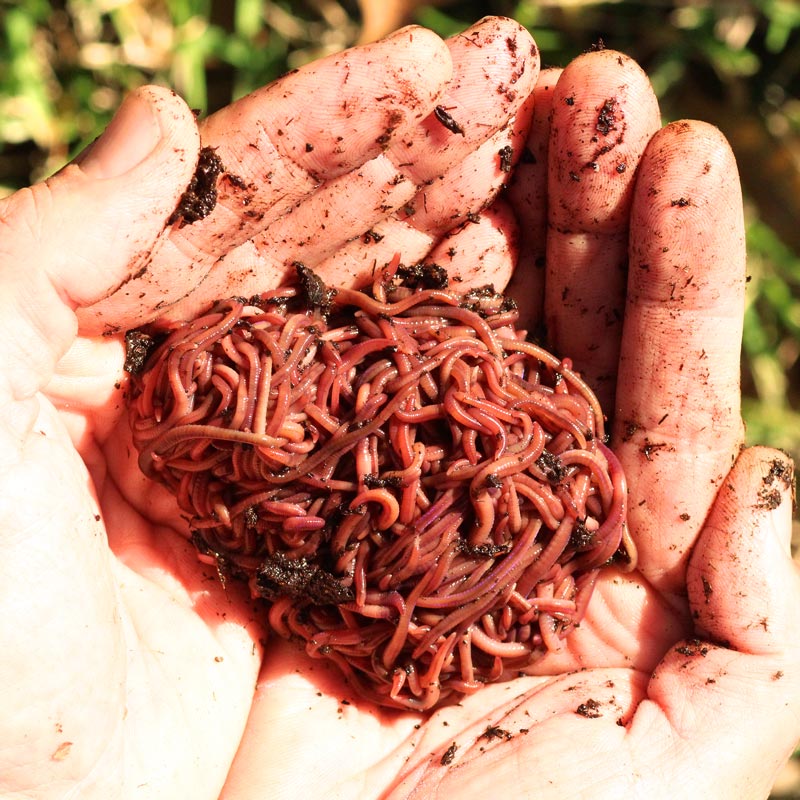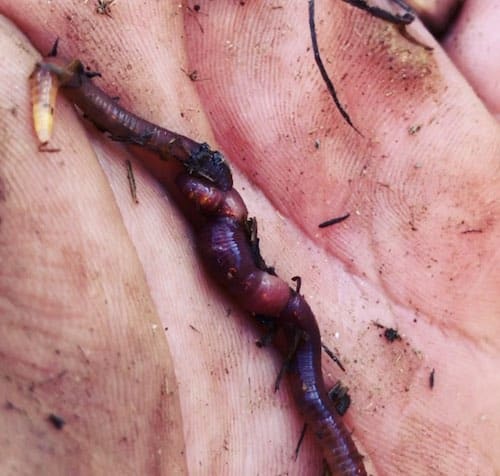Find the Best Products for Lawn Care with Red Wiggler Express for Lush Lawns
Find the Best Products for Lawn Care with Red Wiggler Express for Lush Lawns
Blog Article
Red Wigglers: The Unsung Heroes of Organic Waste Recycling
Red wigglers, or Eisenia fetida, act as critical representatives in the natural waste reusing process, changing discarded products into beneficial vermicompost. Their efficient breakdown of organic matter not just enhances dirt quality however additionally adds to lasting waste monitoring practices. As the globe increasingly looks for options to combat waste accumulation and enhance farming performance, recognizing the role of these worms comes to be essential. What devices allow them to thrive in garden compost atmospheres, and just how can they be effectively used in both domestic and business settings? Discovering these questions reveals the wider implications of vermicomposting in our environmental landscape.
What Are Red Wigglers?
The amazing resilience of red wigglers, medically understood as Eisenia fetida, emphasizes their important function in organic waste recycling. These tiny, reddish-brown earthworms are usually found in decaying natural issue, such as garden compost piles and manure stacks. Lake Hickory Bait. Unlike other earthworm varieties, red wigglers thrive in nutrient-rich atmospheres and are very reliable at damaging down natural products, making them crucial for vermicomposting

(Red Wiggler Express)Along with their role in waste reduction, red wigglers add to soil health and wellness by boosting soil framework and oygenation via their burrowing activities (Lake Hickory Bait). Their presence in composting systems not only improves decay prices however additionally advertises a lasting strategy to waste management, illustrating their significance in environmental conservation efforts
Benefits of Composting With Worms
Composting with worms, particularly red wigglers, supplies numerous advantages that enhance both waste management and soil health. Initially, these worms successfully damage down natural waste, transforming it into nutrient-rich vermicompost that enhances soil. This procedure increases disintegration, enabling a quicker recycling of kitchen area scraps and other natural products compared to traditional composting methods.
In addition, the vermicompost generated by red wigglers is bursting with useful bacteria, which help boost dirt structure, oygenation, and wetness retention. This improves the overall wellness of plants, promoting vigorous development and enhanced yields in yards and agricultural setups. In addition, the usage of worms in composting minimizes the production of greenhouse gases, such as methane, adding to a much more sustainable waste monitoring system.

How to Begin Vermicomposting
Establishing a vermicomposting system is a simple procedure that can generate substantial advantages for both waste monitoring and dirt enrichment. To start, select a suitable container, such as a plastic bin or wooden box, with adequate ventilation holes to guarantee appropriate air flow. The dimensions ought to ideally be around 2 feet by 3 feet, allowing sufficient space for the worms to flourish.
Following, prepare bed linen material, which can contain shredded newspaper, cardboard, or coconut coir. This bedding ought to be dampened to develop a suitable habitat for the worms. Once the bedding is in area, present red wigglers (Eisenia fetida) right into the bin, normally around one pound of worms for every square foot of area.
Following the positioning of worms, include organic waste, such as vegetables and fruit scraps, coffee grounds, and smashed eggshells. Stay clear of including milk, meat, or oils, as these can produce odors and attract parasites. Ultimately, position the bin in a shaded, temperature-controlled location to preserve optimal problems for worm task. With these actions, you will successfully initiate a vermicomposting system that adds to lasting waste management and improves your dirt.
Preserving a Healthy And Balanced Worm Bin
(Red Wiggler Express)Maintaining a worm bin growing needs regular interest and like guarantee the wellness of the red wigglers and the effectiveness of the composting procedure. Proper upkeep starts with checking the moisture degrees; the container ought to perspire yet not soaked. An excellent guideline of thumb is to keep a consistency comparable to a wrung-out sponge.
Aeration is important too. Delicately blending the bed linen and food scraps every couple of weeks prevents compaction and makes sure that all worms have access to oxygen. Furthermore, it is very important to feed the worms appropriately. A balanced diet regimen of vegetables and fruit scraps, coffee premises, and smashed eggshells should be provided in small amounts to stay clear of overfeeding, which can lead to odors and bugs.
Temperature level law is another vital aspect. Red wigglers flourish in a variety of 55 to 77 levels Fahrenheit. If the container ends up being as well hot or chilly, the worms may end up being stressed out - Lake Hickory Bait. Regularly check for signs of health, such as worm population development and the visibility of healthy and balanced spreadings. By carefully handling these aspects, one can preserve a robust and productive worm container.
Influence On Sustainable Living
The effective upkeep of a worm bin not just profits the health and wellness of red wigglers but also adds considerably to lasting living methods. By reusing natural waste, such as cooking area scraps and backyard particles, red wigglers assist divert substantial quantities of material from landfills. This decrease in waste not only lowers greenhouse gas discharges but additionally lessens the environmental worry linked with waste administration.
Moreover, the spreadings produced by red wigglers offer as a nutrient-rich organic plant food, improving dirt health and wellness and promoting plant development. This natural option to chemical fertilizers sustains lasting agriculture and horticulture practices, lowering reliance on artificial inputs that can harm ecological communities. Furthermore, worm composting cultivates understanding of waste monitoring, motivating people and communities to embrace even more sustainable routines.

Verdict
In recap, red wigglers serve as important contributors to natural waste reusing with their effective disintegration of organic materials. By integrating vermicomposting right into waste administration techniques, individuals and areas can dramatically minimize waste while promoting environmental sustainability.
Report this page